From the salty Dead Sea to the Mediterranean coastline and from snow-capped mountains to the dry Negev Desert, Israel packs a lot into its compact landscape. On top of its beautiful and diverse nature, Israel is known for being the religious hotspot of the world.
Israel is one of my favorite places to visit in the world. Besides the fact that I have been visiting family in the country since I was a small child, the country has an incredible Mediterranean climate, gorgeous beaches, a vibrant city life overloaded with high-tech industries, and is packed with culture and history. Not to mention the beautiful people and world-class food scene!
Conveniently, the small size of the country makes exploring Israel pretty easy. In fact, with a well-planned itinerary, you could explore pretty much every big city in just a few short weeks.
That said, it can take time to figure out where to start. So, to make your trip-planning a little easier, I’ve put together a list of 20 of the best things to do in Israel, from my favorite restaurants to the best day trips and dreamiest hotels.
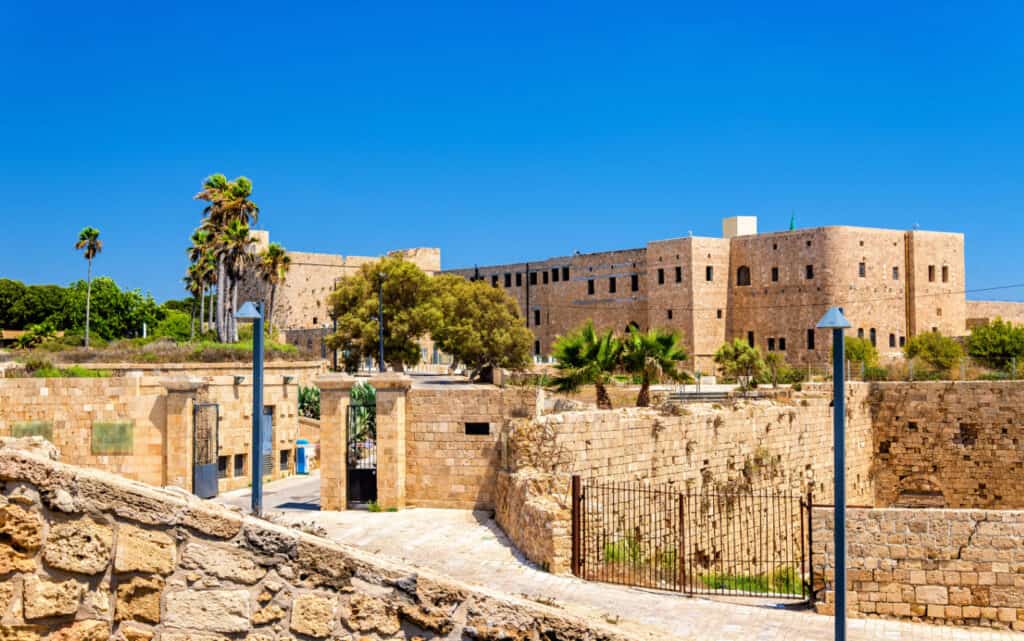
Why I Love Israel: Things to Know Before You Go
The first thing you should know about Israel is that the country (specifically, the city of Jerusalem) is the most important Biblical site for the Jewish, Christian, and Muslim religions. Israel is packed with history and archeological wonder, from millennia-old lost cities to important areas written about in the Bible, Torah, and Quran.
Because of its religious significance, it’s essential to keep an open mind when traveling through certain areas, ensuring you are respectful of the locals and practicing religions wherever you go. The ancient cities welcome those hoping to soak up some history, as long as you dress and act appropriately at holy sites.
While the country is predominantly Jewish, there are many other cultures and religions living together in Israel. Jewish, Christian, and Muslim communities have been living together in this small country for centuries, creating a diverse culture of coexistence.
Of course, I couldn’t write this article without mentioning the local conflict in the region. Political instability is rife in the Middle East, which has a pretty divided political following, to say the least. Unfortunately, this has led the country into many wars and disputes. So, make sure you check Israel’s security status before booking your flight.
Prices are high in Israel. It’s certainly no budget destination, but there are ways to travel the country without overspending. Eating at markets (locally known as shuks) is one way. I’m lucky to be able to stay with family, but I have heard horror stories of hotel bills.
Getting around Israel is pretty straightforward (although expensive). The main cities have excellent public transport networks connected via trains and bus routes. I find renting a car to be the most convenient way to get around, as train tickets can get super expensive and only get you so far.
Shabbat is the holy day celebrated by Jewish people. It begins on a Friday evening and ends on a Saturday evening each week, during which all shops and public transport close for the day. I’ve forgotten about Shabbat many times before, leaving myself stranded in the middle of the city after dark – learn from my mistakes and plan your day accordingly.
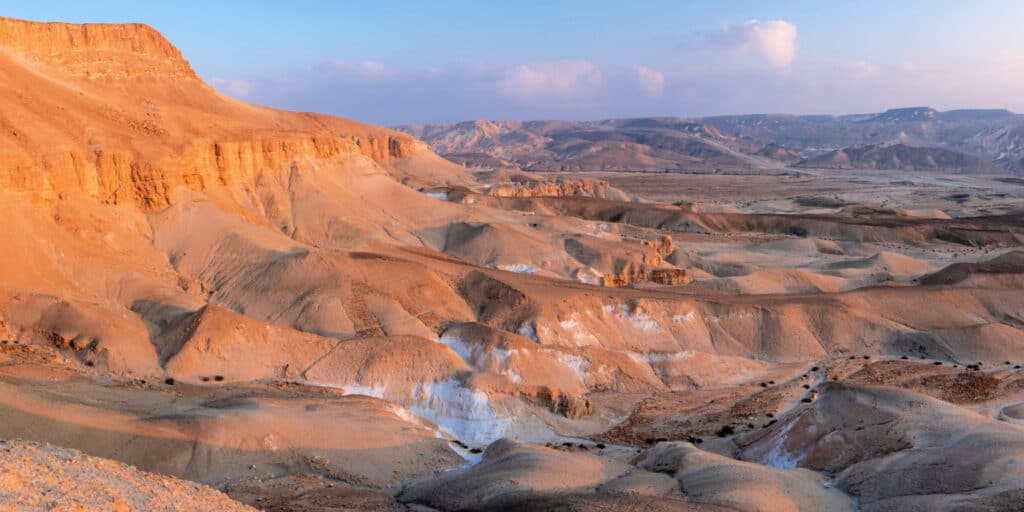
Drive a Jeep through the Negev Desert
Spread across much of Southern Israel, the Negev Desert is a huge (relative to the country) space where you can drive for miles without seeing another person. This rugged, dusty, and dry desert looks like something out of an Aladdin scene and is packed with unique history and biblical tails.
Historically, the Negev Desert is mentioned many times in the Old Testament and Bible. During this period, the desert was a flourishing agricultural region and an important granary for the Ancient Roman Empire. Oh, how times have changed!
The region’s largest city is Beersheba (or Be’er Sheva), which is the best place to hop onto a Jeep tour around the desert. In this desert, you will find the Dead Sea and the ancient fortress of Masada, which I’ve added as separate items on this list of things to do in Israel.
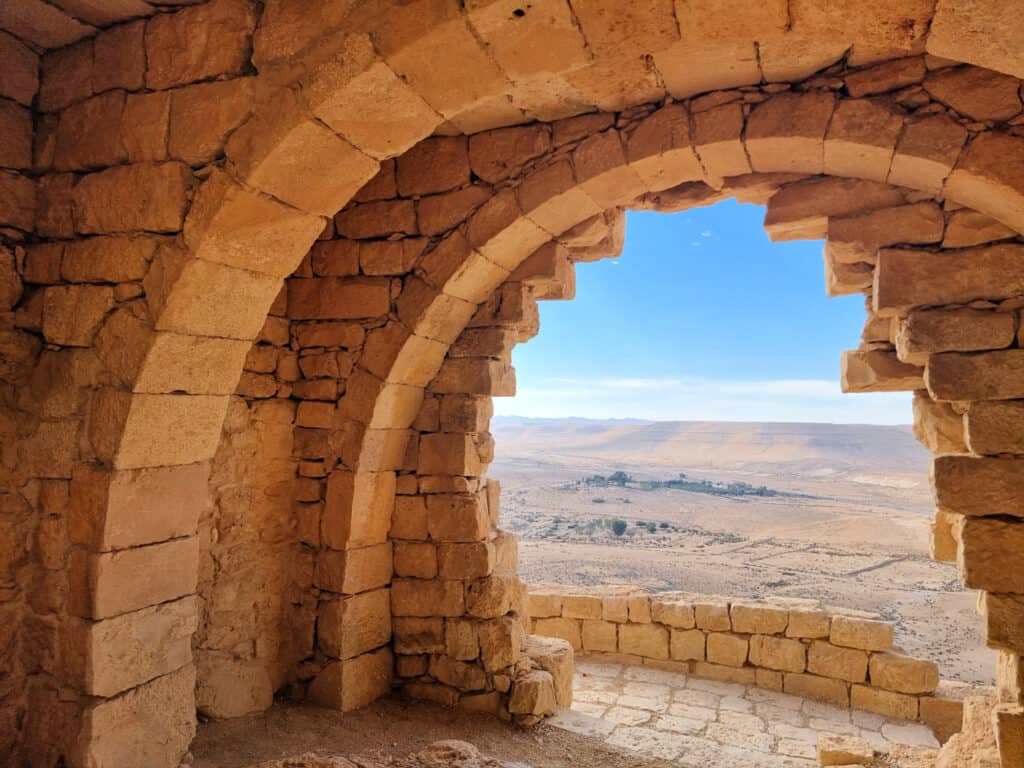
Hike through Avdat National Park
Containing the remains of the ancient city of Nabatean of Avdat, this incredible park is a dedicated UNESCO World Heritage Site packed with history. Thousands of years ago, in the 3rd Century BC, this ancient city functioned as a caravan station positioned along the famous Incense Trail crossing the Arabian Peninsula from Petra to Gaza.
The park is located in the heart of the Negev Desert, on a hilltop above the Tsin Stream watercourse. You can spend some time exploring this ancient city, walking through the ruins of villas, bathhouses, Roman burial caves, and churches that once stood proudly in the desert.
The bathhouse is one of the better-preserved buildings and has been standing since the Byzantine Period. It features different rooms for holding water at different temperatures and a dressing room.
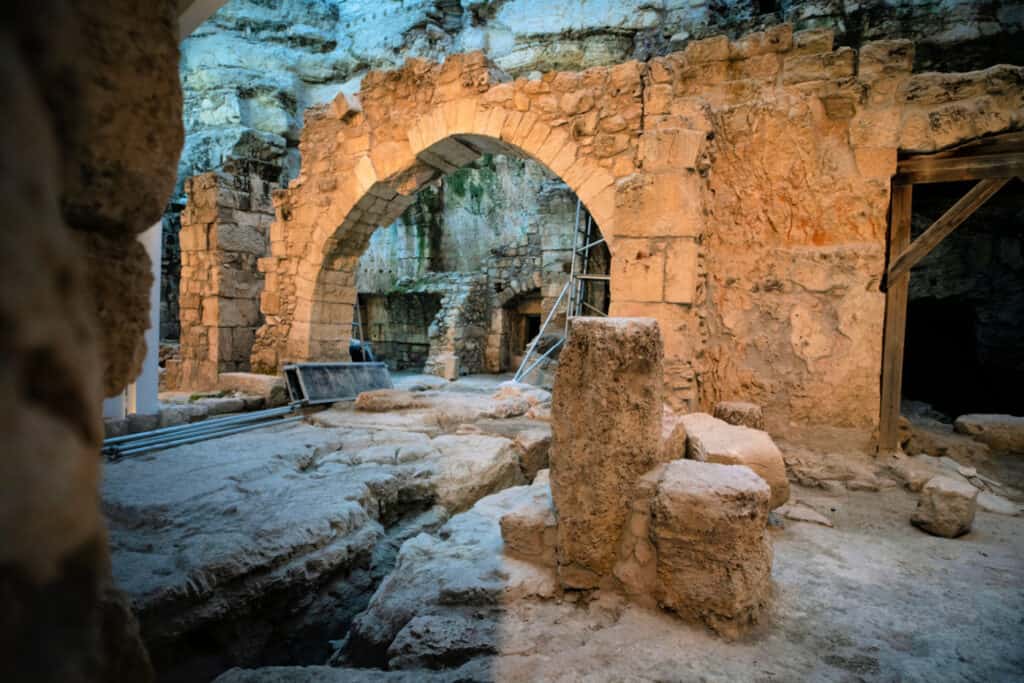
Tour the tunnels under the Western Wall
If there’s one activity in Israel I recommend doing in Jerusalem, it would be to tour the tunnels under the iconic Western Wall. As an historical, religious, and archeological experience, you can uncover ancient and fascinating subterranean spaces packed with archeological findings.
The Western Wall was part of the original Temple Mount, one of the most important remains from the Second Temple of Jerusalem, destroyed around 2,000 years ago. The temple remains the most important site for Jewish people, which is why you will find many religious and secular Jewish people praying here.
The tunnels under the wall reach almost half a mile and show a big part of the hidden temple that tells an incredible story of the Jewish nation.
It is tradition to write down a wish or a dream on a piece of paper and fit it into one of the cracks in the wall, which is now overflowing with personal notes.
If you’re short on time, this Jerusalem and Bethlehem day trip from Tel Aviv is an excellent way to see a lot in a short amount of time. You can check tour availability here:
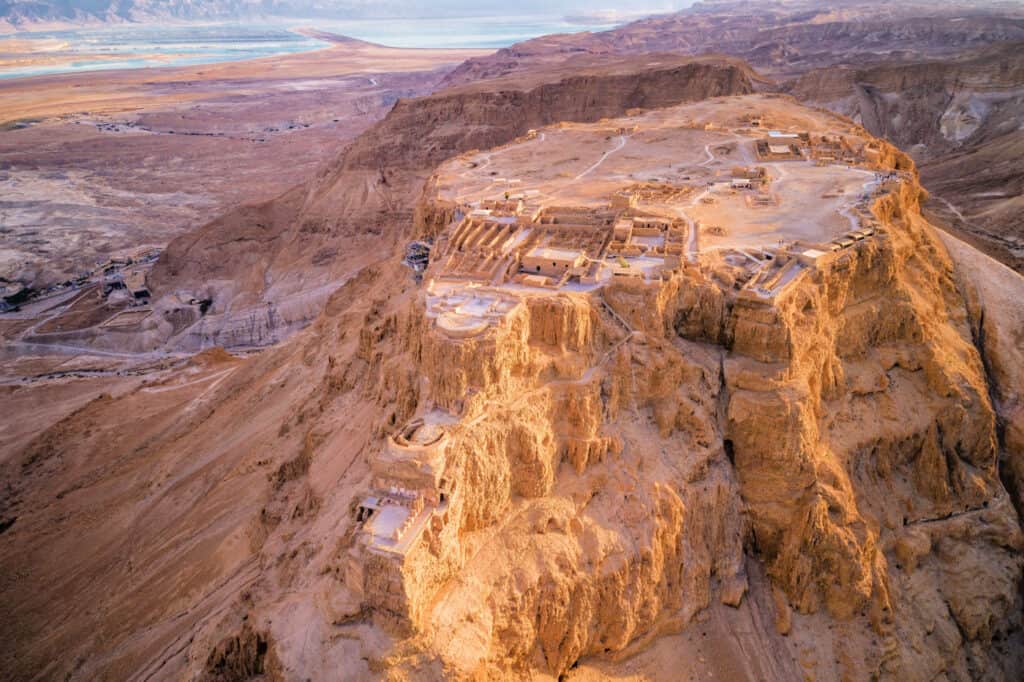
Hike to the top of the Masada Fortress
Perched on top of an isolated rock plateau overlooking the Dead Sea, the Masada Fortress is an incredible historical ruin with a tragic history.
The fortress was built around 37 to 31 BCE as a fortress of refuge in case of attract or revolt. Stock-piled with food and protected by high walls, this was exactly what the fortress tragically ended up being used for.
When pagan Roman forces tried to seize the fortress in 73 AD, the local Jewish population chose mass suicide instead of being captured by their enemies. The inhabitants destroyed the palatial complex themselves, making it uninhabitable for the attackers.
Today, it’s one of Israel’s most popular attractions, attracting around 750 thousand visitors each year. You can either hike to the top of the cliff face or take the cable car to the top. Whether you’re staying in Jerusalem or Tel Aviv, this jam-packed day trip will show you the best of the best of Masada, Ein Gedi, and the Dead Sea.
Tuck into a meal at Rachmo in Jerusalem
If I can recommend any restaurant in Jerusalem, it would have to be the oldest restaurant in the Old City. As poetic as it sounds, Rachmo is located in the heart of the city in a traditional stone building. The restaurant started out as an eatery for city workers’, offering large portions of wholesome food for a low price.
Today, it serves traditional Mediterranean food like falafels, homemade hummus, and pita bread that will impress you at the first bite. Don’t expect anything gourmet or fancy, but rather expect traditional Sephardi (a sect of Jewish people from Southern Europe) comfort food in a low-key atmosphere.
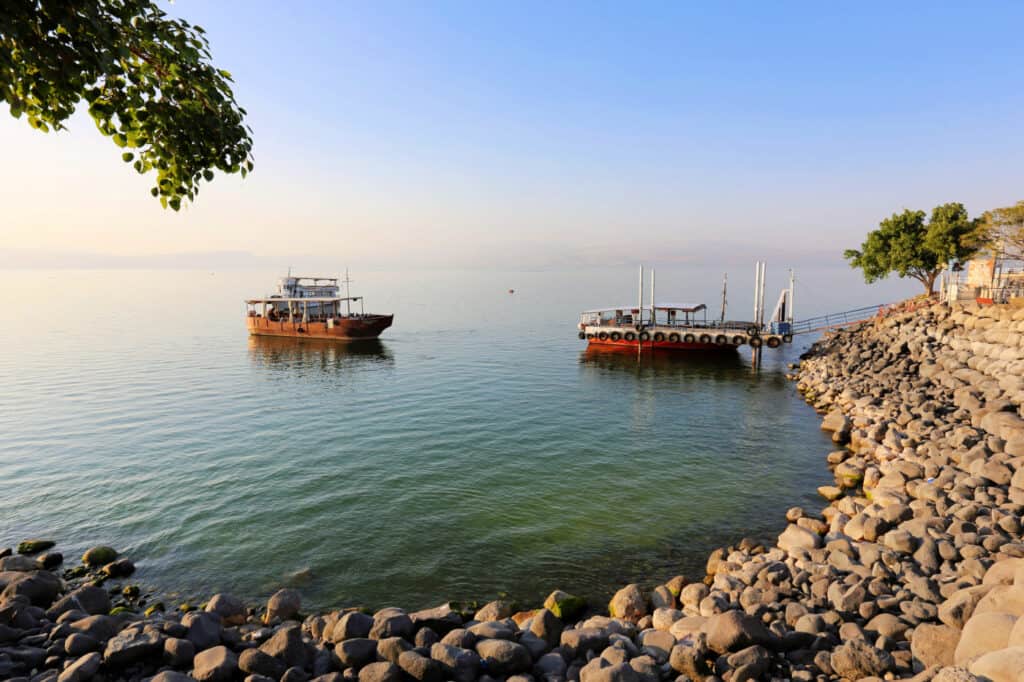
Experience a day at Kibbutz Ein Gev
Located in the north of the country on the shores of the Sea of Galilee, Kibbutz Ein Gev is the oldest still operating Kibbutz in Israel today. What is a kibbutz, you ask? Well, they are a type of settlement only found in Israel, which was founded on the premise of a collective community.
The idea of a kibbutz was revolutionary, providing housing, food, and healthcare to those willing to volunteer their time and energy to work for the kibbutz in the form of a social contract. Each kibbutz would have a core offering, usually agricultural, and any income earned by the kibbutz would be distributed evenly among its residents. Ein Gev was founded in 1920 and farmed and sold bananas and dairy products.
While many Israelis have chosen to privatize their income and follow a more capitalist existence, there are still a few traditional Kibbutzim around the country.
Luckily for tourists, Ein Gev Kibbutz Hotel offers gorgeous accommodations with a private beach on the eastern shores of the Sea of Galilee. So, you can experience a taste of kibbutz life by spending some time in this hotel.
Splurge on a night at The Jaffa Hotel
If you’re traveling all the way to Israel, you might as well splash out and stay in one of the top hotels. Run by Marriot, The Jaffa Hotel is set in a restored 19th-century hospital monastery building and is one of the best in the country. The building combines the dramatic architecture of a monastery with slick modern interiors, featuring stylish cocktail bars, a chilled pool area, and cozy eateries.
It’s located a few blocks from the Mediterranean Sea in the trendy Tel Aviv neighborhood of Jaffa, removed from the city hustle but still buzzing with history and activity.
With a swimming pool, gardens, and rooftop deck with city and ocean views, your only problem will be when you need to check-out of this gorgeous hotel.
Indulge in fine dining in Jaffas OCD
One of my favorite things to do in Israel is to eat, and there is nowhere that prepares a meal quite as well as OCD in Tel Aviv does.
Eating here is a dining experience like no other, where only 19 guests at a time will be served a 19-course meal. Diners surround the kitchen at bar-like seating and watch as each course is impeccably plated in front of them by world-class chef Raz Rahav.
The menu is redesigned four times yearly and revolves around a common theme or story. The dishes usually blend eastern Mediterranean cuisine and modern techniques, drawing from Israel’s incredibly flavorful culinary heritage.
In an ode to sustainability, many of OCD’s dishes are based on ingredients that other chefs would throw away – for example, asparagus stalks are saved, preserved in sugar, and served as a unique dessert.
Enjoy the aromas of the Kurdi Spice Shop at the ancient port in Acre
Acre (also known as Akko) is a port city just north of the city of Haifa on the Mediterranean coastline. It’s known for its well-preserved ancient city, with tunnels hiding treasures that depict the daily life of Ottoman times.
The 2,000-year-old port is said to have been located at the mouth of the Na’aman River and the Mediterranean Sea. The city has a jam-packed history shaped by the Romans, Ottomans, Crusaders, Mamelukes, Byzantines, and the British. Today, it is a UNESCO World Heritage Site and one of the world’s oldest standing ports.
The port is home to an iconic mosaic-clad Synagogue with seven Torah arcs and an incredible 18th-century Al-Jazzar Mosque built with marble pillars and underground pools.
Akko’s ancient port hosts a small local market packed with spices. However, the old-fashioned spice shop called Kurdi is one of the most atmospheric places to stock up on spices. The shop is decorated with shells and other treasures from the sea which hang among the beautiful glass bottles of spice blends.
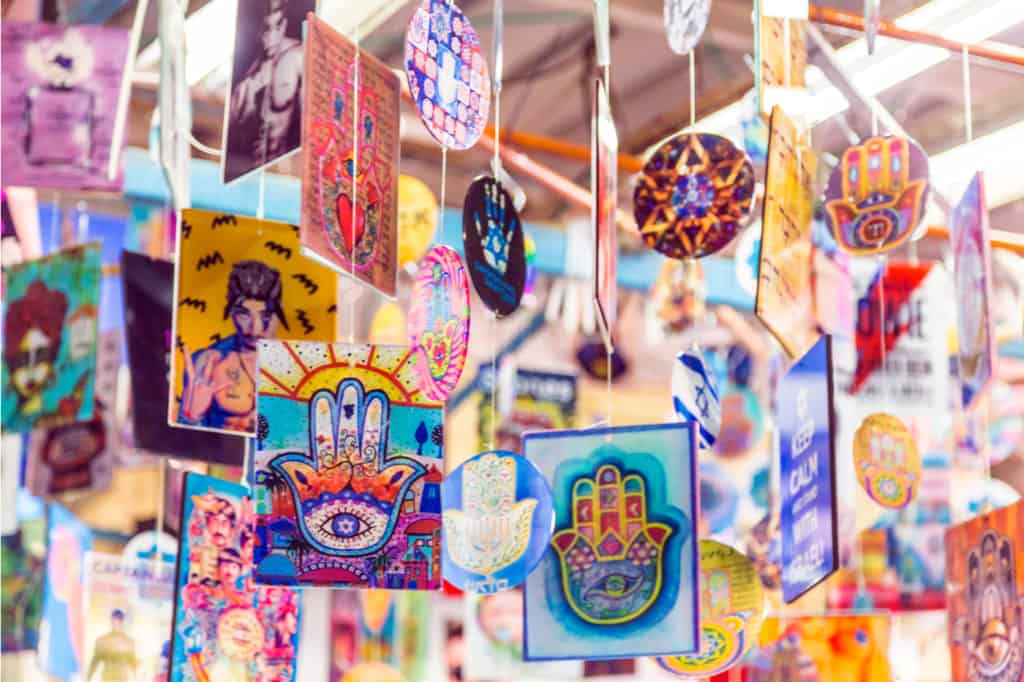
Enjoy a tasty street meal at Carmel Shuk in Tel Aviv
If there’s one activity you can’t miss when visiting a Middle Eastern country, it’s a traditional market experience. Locally called a ‘shuk’ in Israel, there are tons of markets selling fresh produce, artisanal products, and affordable knick-knacks around Israel.
One of the most famous and busiest is the Carmel Shuk (Shuk Hacarmel) in Tel Aviv. First opened in 1920, this vibrant marketplace is the largest in the city, where traders sell everything from fresh fish to homemade Turkish delight.
You’ll have to get your bargaining skills ready for this one as you haggle with vendors to get the best price. Other than the freshest produce and best-smelling spices, Carmel Shuk is one of my favorite places in Tel Aviv to grab a tasty street meal. Order a hand-held pita sandwich paired with a boutique beer and finish your meal with a sweet halva treat.
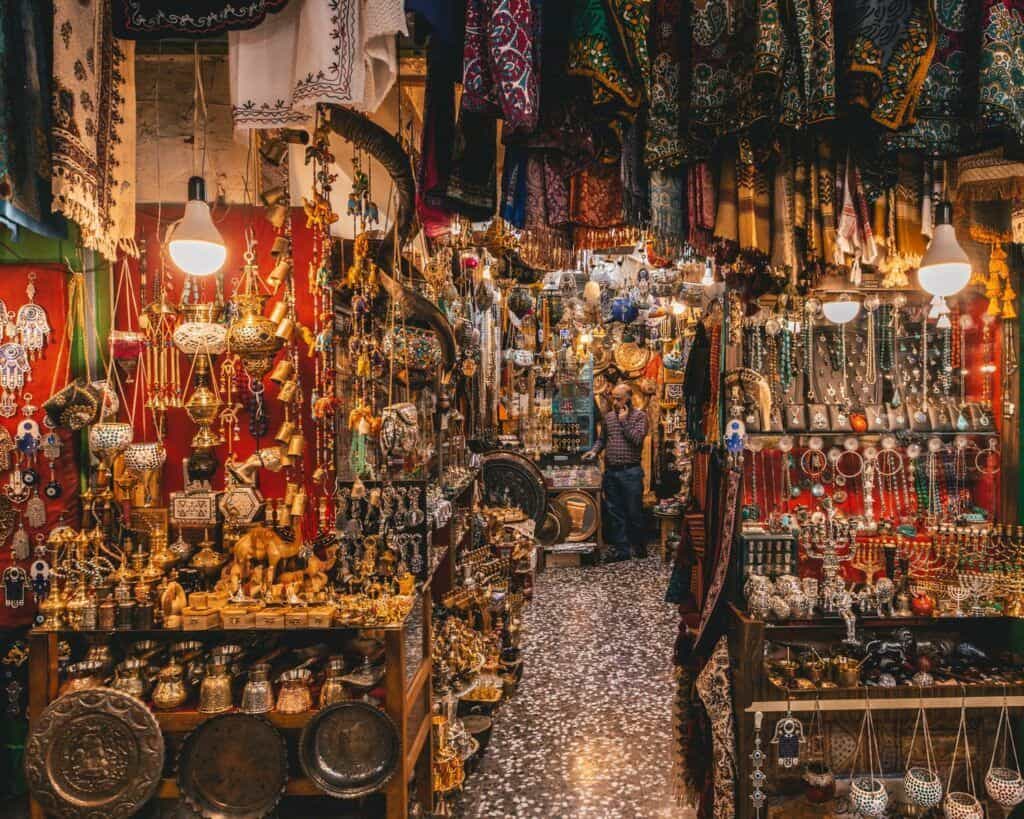
Explore the Old City of Jerusalem
One of my favorite things to do when arriving in a new city is to explore on foot. Walking around a city is one of the best ways to see the hidden side alleys and treasures you otherwise wouldn’t see when driving, and the Old City of Jerusalem might just be one of the most intriguing places to explore.
Around every corner of this ancient city is another secret, with tiny doorways leading to small shops, local restaurants, and open squares. The entire walled-in city is just 0.35 square miles big, making it super easy to walk around on foot. Just make sure to bring your walking shoes for the cobble stone streets!
The entire city, also called the City of David, is a historical and archeological hotspot built on top of the site of the original Temple Mount. It was the core settlement of Jerusalem during the Bronze and Iron Ages and is divided into four quarters: The Jewish Quarter, The Muslim Quarter, The Christian Quarter, and The Armenian Quarter.
Within these ancient city walls, you could visit the Church of the Holy Sepulchre, The Tower of David, The Western Wall, The Dome of the Rock, and the Temple Mount.
If you need help figuring out where to start, this customized private tour with a local guide could be the answer to your prayers in Jerusalem.
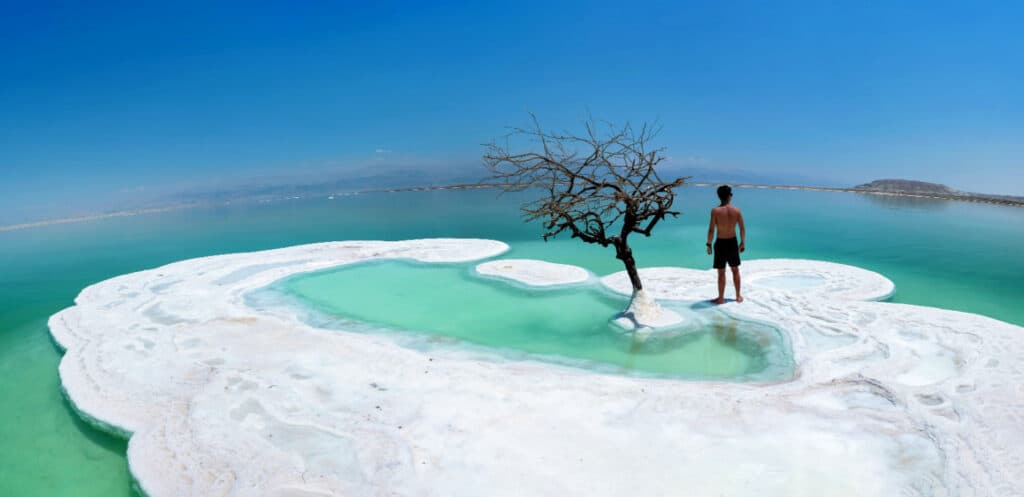
Cover yourself with mud from the Dead Sea
After a few days of non-stop exploring, learning, and adventuring, one of my favorite things to do in Israel is to soak in the salty Dead Sea and lather my body in the mineral-rich mud.
Famous worldwide for its incredible skin-rejuvenating properties, the mud and salt water in this salty sea makes taking a dip in the water just like visiting a five-star spa.
The sea constitutes 33% salt, about eight times more salt than other water bodies. Because of this, you can kick up your legs and float on your backside in the water – one of the more relaxing Israel activities on the list.
Join this Dead Sea full-day tour from Jerusalem if you’re short on time. You can check tour availability below, as it does regularly sell out:
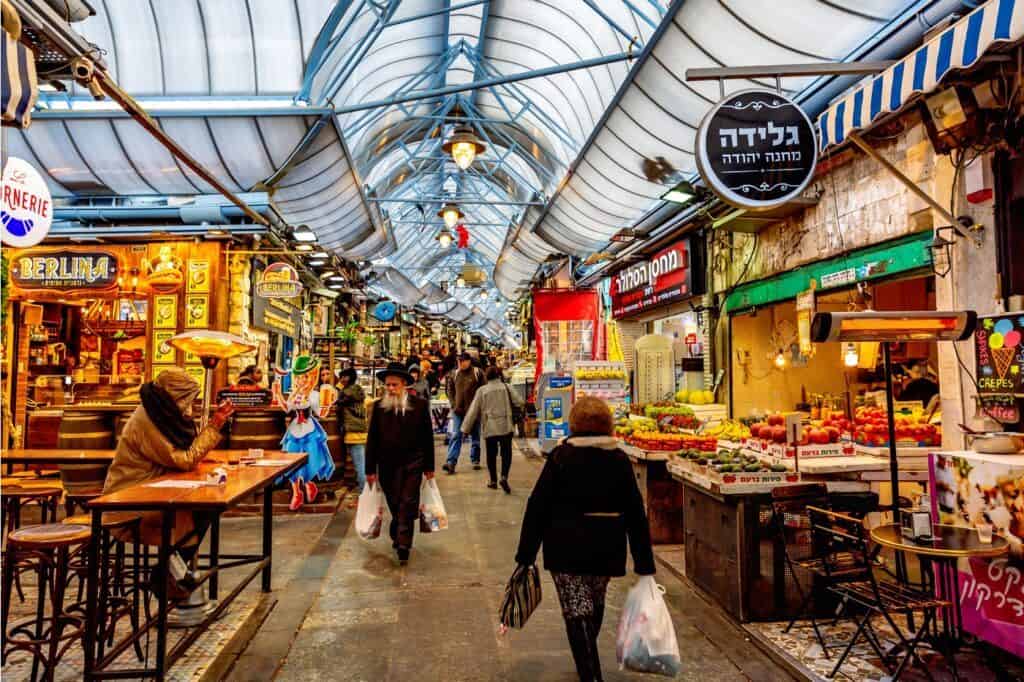
Browse the Mahane Yehuda Shuk in Jerusalem
Another one of the most popular markets in the country, Mahane Yehuda Shuk, is so well-known it is sometimes just referred to as ‘The Shuk.’ It’s popular with tourists and locals and hosts over 250 vendors selling fresh fruit and vegetables, nuts, meats and cheeses, and wines and liquors.
If you’re staying in a hotel and fresh produce won’t carry well in your suitcase, there are also vendors selling clothing, handmade shoes, houseware, and, as always, tourist knick-knacks.
My favorite thing to do in this market is to pick up an authentic falafel or shawarma and freshly squeezed orange juice (Israel has some of the best oranges in the world) and eat it on the outskirts of the market in the Old City.
The color and bustle of the marketplace, made more intense by vendors calling out prices and special discounts, is a cultural experience in itself.
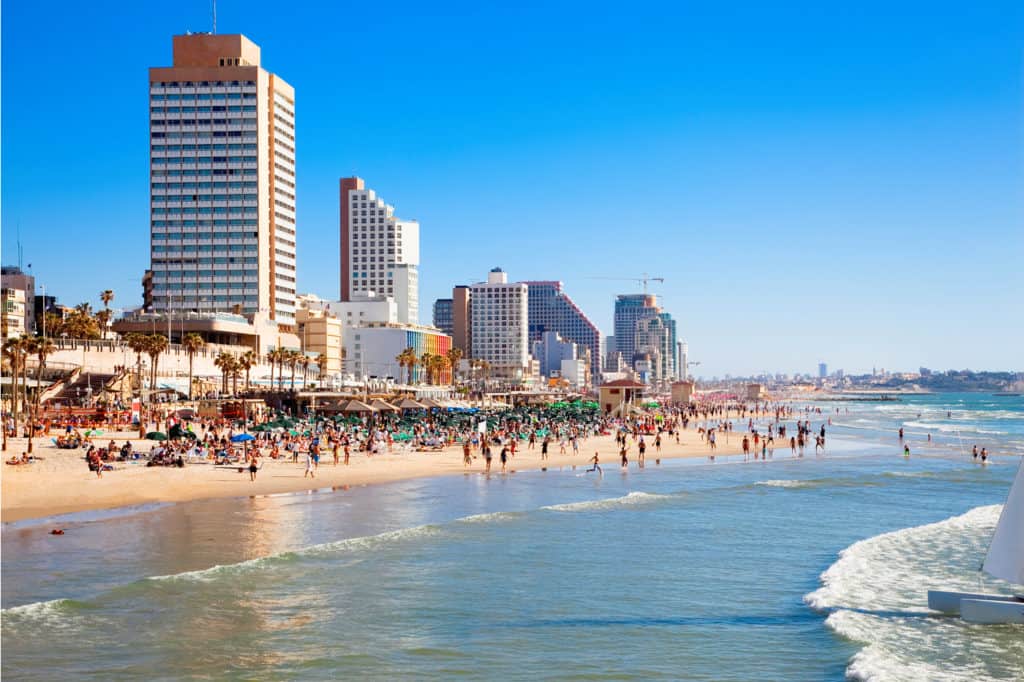
Enjoy a beach day in Tel Aviv
Now this one might seem self-explanatory but do yourself a favor and dedicate some serious time to the beach when you visit Israel. Summers in the country are sweltering hot, and warm temperatures last from May until October. In fact, when I visit during the heat of summer, I expect nothing less than at least one beach visit each day.
There are beautiful beaches lining the Mediterranean coastline of the country; however, for a vibe and buzz like no other, head straight to the long stretch of golden and bustling beaches of Tel Aviv. I can only compare these beaches to the strips in Santa Monica and Miami, where beaches are lined by a city boardwalk with tons of cafes, restaurants, and bars.
Of course, these city beaches are fitted with fresh-water showers and have umbrellas and beach lounger vendors renting the best spots on the beach. While being in the city buzz can be fun, I often prefer a more secluded beach environment. If this is the case, I head straight to Jaffa Beach (also known as Givat Aliyah or Ajami Beach) towards the old port of Jaffa. This local beach is dog friendly and maintains a level of privacy underneath the busy boardwalk.
For a vibrant atmosphere and social scene, Banana Beach will keep you entertained from sunrise, to, well, sunrise! Metzitzim Beach is ideal for families, with services and facilities like bathrooms, lockers, and lifeguards to make it a conveniently simple adventure with young kids.
Spend a night at The King David Hotel in Jerusalem
One of the most prestigious and exclusive hotels in Jerusalem, The King David Hotel is set on a hilltop overlooking the walls of the Old City and Mount Zion. It is ideally located where the historic Old City and new Jerusalem meet and has traditionally hosted heads of state and dignitaries visiting the city – no surprise there.
I stayed in this hotel with my family once, and I will never forget the experience. Other than the original limestone building in which the hotel is set, the interiors are absolutely breathtaking. The hotel features traditionally extravagant Middle Eastern and Arabic interiors, with mosaic tiling, intricately painted walls, and hand-carved furniture. Paired with the incredible views, the hotel is second-to-none in this city.
Each room is unique, with a mixture of bespoke furnishings and antique interiors. Best of all, the hotel features a vast outdoor swimming pool, which, let me tell you, is essential if you visit during summer.
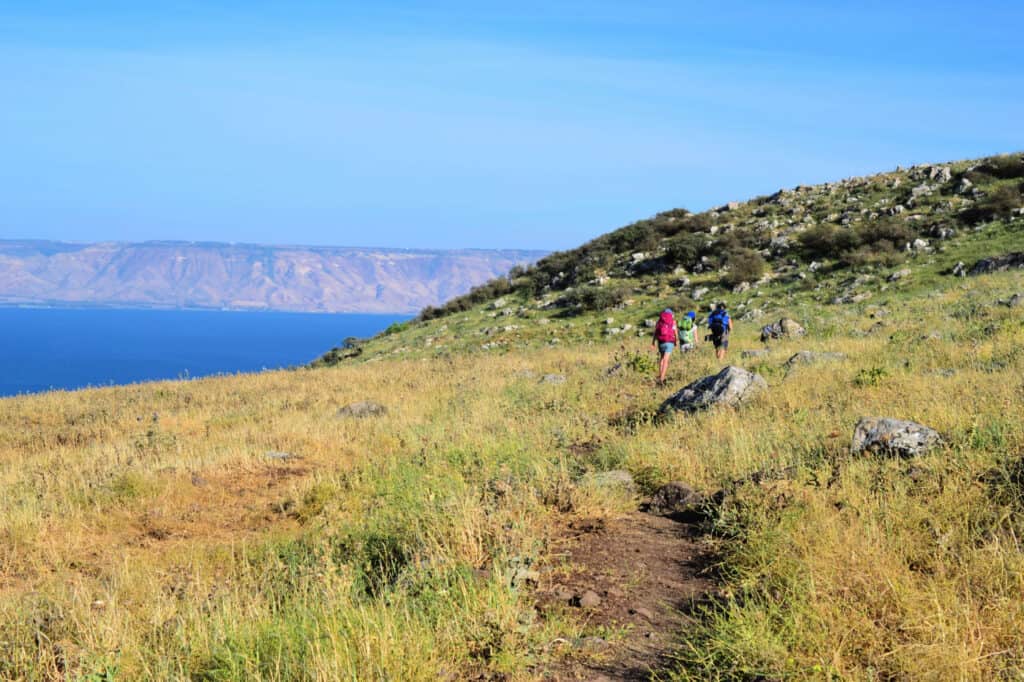
Hike from Nazareth to the Sea of Galilee
Located on the Syrian border in the north of Israel, the Sea of Galilee is home to several important religious Christian sites, including Capernaum, Tabgha (the location where Jesus fed people fish and loaves of bread), Cana, and the Mount of Beatitudes where the Sermon on the Mount took place. Naturally, it’s a spiritual destination for Christian pilgrims who visit to experience the location where Joseph and Mary once lived.
Today, Nazareth is the largest Arab city in the country, brimming with culture and history, boasting old Ottoman architecture and exciting archeological finds.
About halfway between the Sea of Galilee and the Mediterranean Sea is the historical city of Nazareth, where you will find the largest church in the Middle East.
One of the best ways to experience this holy part of the country is to walk the ‘Jesus Trail Hike’ from Nazareth to Galilee. If done correctly, this immersive hike will take under a week, following in the footsteps of Christianity’s most important leader, and visiting unforgettable historical locations along the way.
If you don’t have time for a week-long trek, this guided day trip from Tel Aviv is an excellent way to see Nazareth and the Sea of Galilee in one visit.
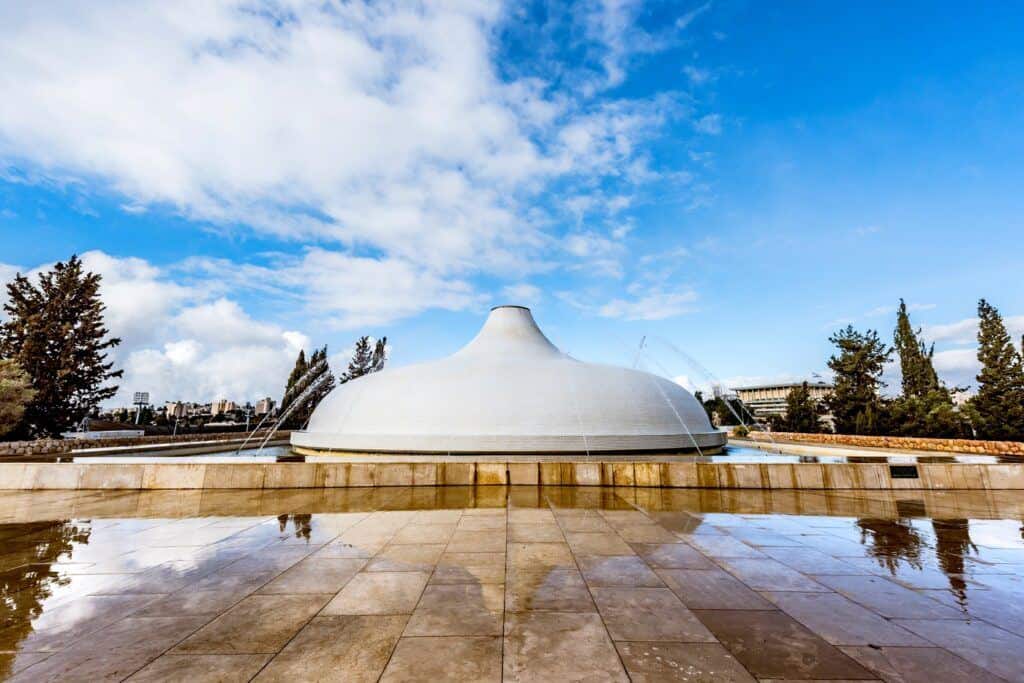
Wander around the impressive Israel Museum
One of my favorite things to do in Israel (and any foreign country, for that matter) is to visit the top museums in the city. Set in the heart of Jerusalem, The Israel Museum is a world-famous museum with incredible art and archeological findings.
It was founded in 1965 and is best known for its fine art, Jewish art, and for being home to the most extensive collections of biblical findings worldwide. If you don’t feel like spending your days indoors exploring Israel’s museums, this is a great spot to learn about the country’s history and its people, as well as to view some incredible fine art.
The museum is beautifully curated, featuring impressive backdrops to the age-old scriptures and artifacts. I recommend visiting on a day when the weather isn’t great. However, even on a hot summer’s day, take some time to read about the history of this incredible land while enjoying a bit of respite from the heat outside.
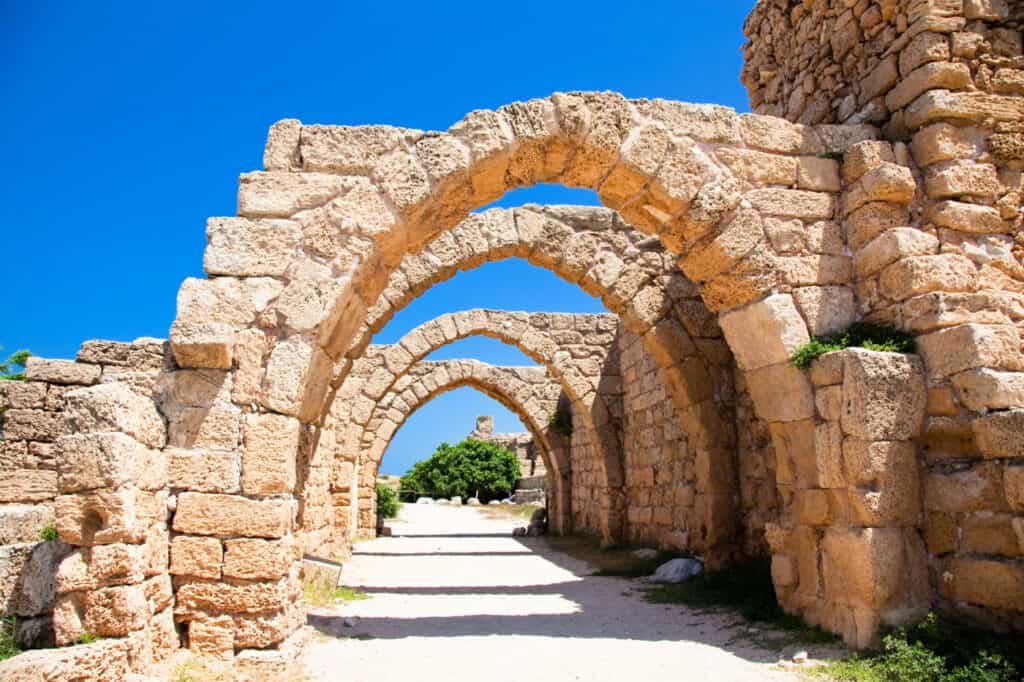
Take a step back in time at Caesarea
I’ve been visiting Caesarea with my family since I was a child; however, I only recently started to appreciate the impressive archeological importance of this ancient city.
Located midway between Tel Aviv and Haifa on the Mediterranean coastline, this now affluent town was once an ancient Herodian fishing port built by Herod the Great around 25-13 BCE.
During the Muslim conquest in the 7th century, Caesarea was the last city of the Holy Land to fall to the Arabian empire, who kept control of it until it was again made a major port again by the Crusaders. For centuries, the city was an intellectual hub of the Mediterranean and the cultural capital of then Palestine. Now, Caesarea lies in ruins within one of Israel’s national parks.
The area is gorgeous to visit, where ancient harbor ruins meet stunning beaches and modern homes. The restored amphitheater, one of the city’s most impressive archeological finds, is now the location of summer concerts.
Come hungry because there are a bunch of amazing restaurants in the Old City, as well as boutique shops to browse. My favorite pastime was to swim at the Caesarea Aqueduct Beach (one of the country’s best beaches) while my family would enjoy a relaxing seaside meal.
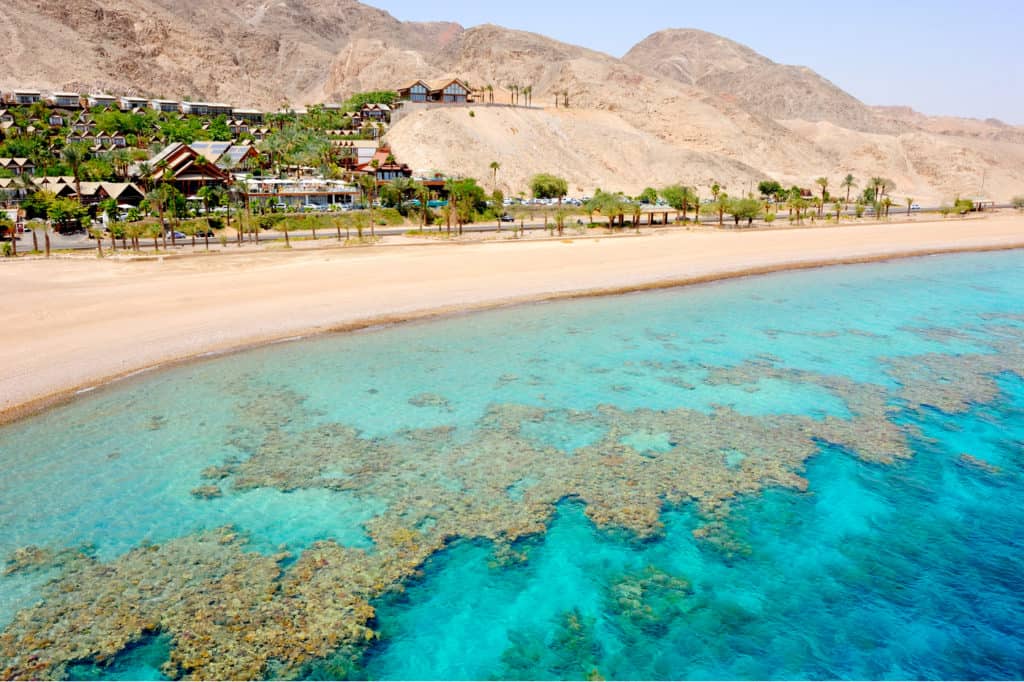
Snorkel over reefs in Eilat
Eilat is one of those bizarre places you won’t believe exist until you visit it. Israel’s most southern city, Eilat sits at the very bottom of the Southern Negev Desert, lining the most northern coastline of the Red Sea.
A Jordanian port neighbors it to the east, and an Egyptian resort to the west. It’s one of the most unique places in the world, where tropical oceans meet desert landscape.
The city is a major port of the Red Sea, with a history dating back to the 7th century BC. While it is packed with archeological digs and a political history documented in many modern books and Hollywood movies, I’ve added Eilat to the list for a different reason – its tropical seas.
Despite its harsh weather conditions and desert landscape, Eilat is home to some of the world’s most incredible underwater coral forests and dive sites. Coral Reef Beach, Migdalor Beach, and Princess Beach are among the most popular shallow water dive and snorkeling sites, teeming with coral and colorful sea life.
For expert divers, the water gets deep very fast in the Red Sea, which is super convenient for divers who can make their way to deep-sea shipwreck sites and underwater Roman ruins without needing a boat transfer.
If you’re visiting with young kids, I highly recommend checking out Dolphin Reef, where you can swim with dolphins frolicking in their natural habitat.
Enjoy a day in the tropical waters with this coral reef snorkeling trip guided by an expert instructor in Eilat.
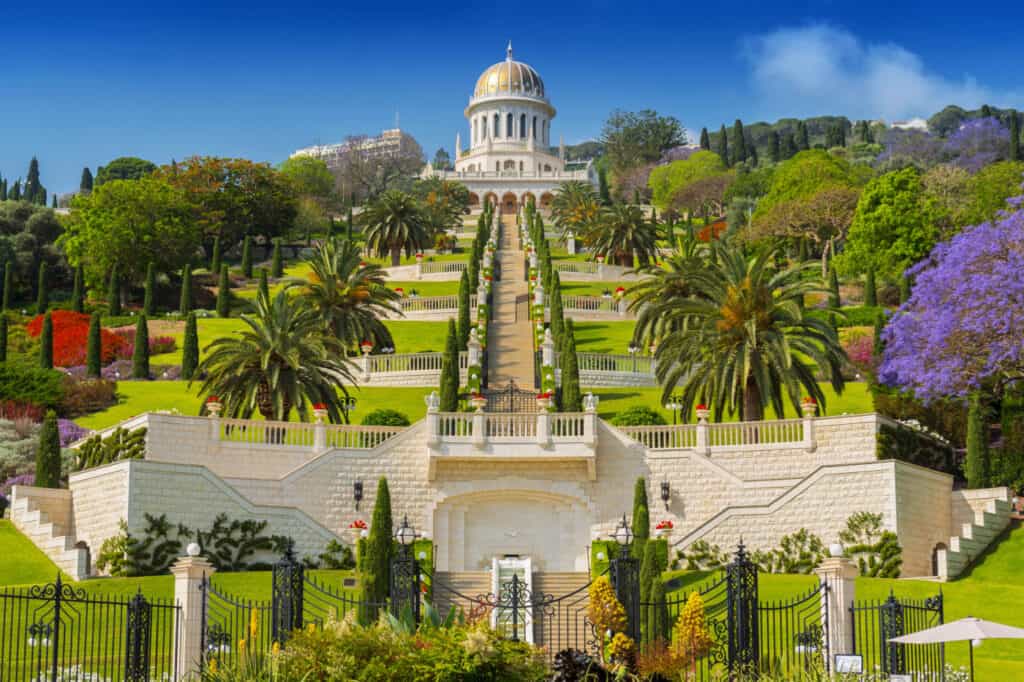
Walk the stairs of the Baha’i Gardens
To add to the country’s religious significance, Israel is also home to the burial site of the founder of the Baha’i faith. While this landmark is visited by thousands of pilgrims each year, it’s also a buzzing tourist hotspot, and for a good reason.
Perched on the flanks of Mount Carmel above the city of Haifa, The Holy Shrine of Bab sits within some of the most beautiful gardens in Israel, not to mention the most distinct tourist attraction in the area. Lush gardens aren’t exactly plentiful in this dry Middle Eastern landscape, making the Baha’i Gardens one of the most beautiful sites in the country.
Because of its mountainside location, the garden comprises different terraces, manicured flowerbeds, neatly trimmed lawns, and topiarized trees among flouncy fountains and white marble railings. In a scene that could only be compared to a villa in the South of France, the Baha’i Gardens are a spectacular place to take in the views of Haifa and the Mediterranean Sea.
Every day at noon, there is a free garden tour which requires no reservation. I enjoyed taking part in this tour before walking around the gardens on my own steam, as I learned about the religious significance and history of the gardens and the Baha’i faith.

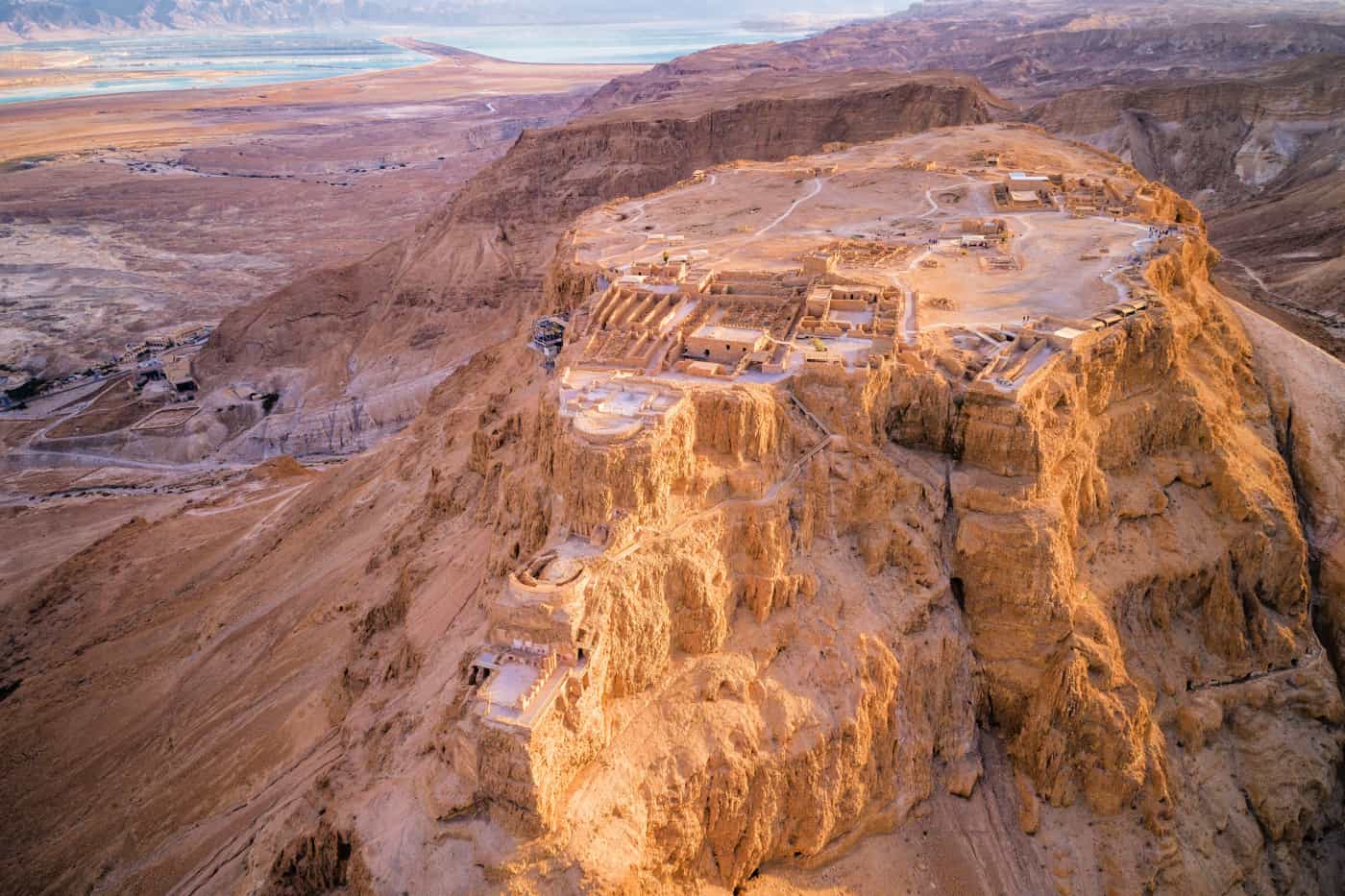
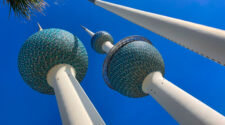
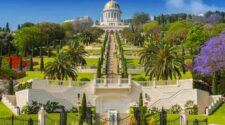
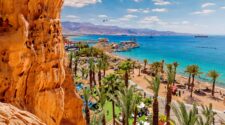
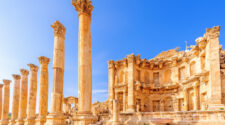

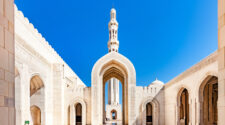
No Comment